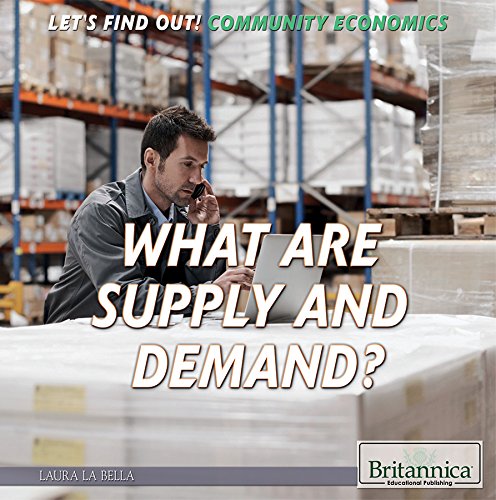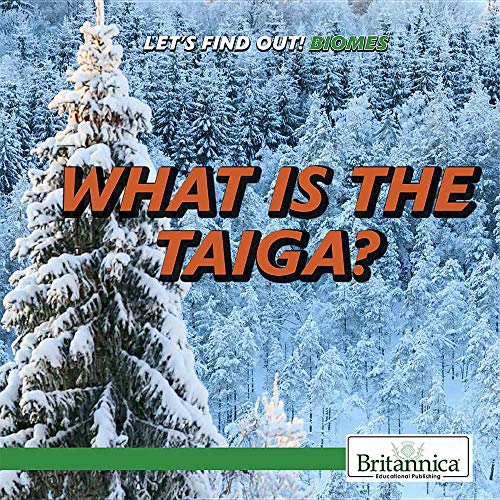-
Let's Find Out About Money
Kathy Barabas
Paperback (Scholastic, June 1, 1997)Text and photographs depict the process of making money, from ores to finished coins. O
O
-
What Are Supply and Demand?
Laura La Bella
Paperback (Rosen Education Service, Aug. 15, 2016)This volume offers a concise overview thats perfect for young readers who are just learning about economics. A basic overview of supply and demand breaks down the concept with clear explanations of each aspect, using concrete examples to which readers of the focus age group can relate and understand. Vibrant illustrations help reinforce the text, and pertinent vocabulary is highlighted in bold boxes or in the glossary. Questions throughout help readers put the ideas into context. This lively text keeps readers engaged and turning the pages. X
X
-
What Is Cybersecurity?
Haq Kamar
Paperback (Britannica Educational Pub, Jan. 15, 2018)Inexperienced users of computers often jump at the chance to click colorful flashing ads on the sidebar and are also tempted to download files from sites not worthy of trust. In short, people need to learn how to stay safe online. This book will introduce readers to different types of online threats, including viruses and malware. They will learn how different dangers spread and some basic steps to stop or prevent them. Additionally, this book will illuminate the scary consequences of falling prey to those threats, such as having personal information stolen or deleted, and cyberstalking. O
O
-
The Nitrogen Cycle
Bobi Martin
Library Binding (Rosen Education Service, Jan. 15, 2018)From tiny organisms to plants and people, all living things need nitrogen. This engaging STEM resource introduces elementary school readers to the importance of the nitrogen cycle in clear, easy-to-follow text. Readers will learn why nitrogen is an essential nutrient for growth, where nitrogen is found, the important role legumes play in the nitrogen cycle, and more. Colorful illustrations and photographs add interest and additional information to each page. Compare and Contrast, Vocabulary, and Think About It sidebars support Common Core standards. This is a must-have book for any shelf. R
R
-
What Is Light Energy?
E. D. Chesborough
Paperback (Britannica Educational Pub, Aug. 15, 2017)Its pretty much impossible to imagine what our lives would be like without light energy. As this elementary-level STEM text explains, energy from the sun sustains life on Earth. Young readers will learn about the properties of light, what wavelengths are, the relationship between light and color, and how reflected light enables us to see things. Colorful photos and useful diagrams help illustrate the content presented, while sidebars prompt readers to think about what they have read. Teachers and students alike will appreciate this clear, age-appropriate introduction to a potentially challenging topic. J
J
-
Where Plants Grow
Rebecca Kraft Rector
Paperback (Rosen Education Service, Aug. 15, 2018)Plants can grow almost everywhere. This book explores ecosystems particular to the seven continents and watery environments, including forests, deserts, mountains, the ocean, and lakes. This book also includes an examination of how artificial environments like greenhouses and the indoors can be healthy for some plants, and how some artificial environments cause harm even beyond their own boundaries. For each environment type, this volume describes the types of plants that live there, and how well they thrive. Any young reader who wants to explore the needs of plants and how their environment meets those needs will find this book essential. R
R
-
What Are Sea Plants and Algae?
Lynnae D Steinberg
Library Binding (Rosen Education Service, Jan. 1, 2017)Plants and algae form an important basis of all marine ecosystems. They provide nutrients to animals that eat them and also create oxygen for humans and animals to breathe. This academic lower elementary title covers the diversity of marine plants and algae that exist as well as the processes they undergo to grow and thrive. Photosynthesis is explained in easy-to-understand language, as is the role of plants and algae in food chains and food webs. Finally, the importance of sea plants and algaeand threats to their existenceis addressed in a timely discussion on global warming. O
O
-
Volcanic Processes
Laura Loria
Library Binding (Rosen Education Service, Jan. 15, 2018)Destructive and awe-inspiring, the eruption of a volcano is a dramatic demonstration of nature's power. However, there is much more to the process than what we see on the surface. Readers will explore the geological structure that makes volcanic activity possible and follow the sequence of events that culminate in an eruption. In addition to eruptions, this text examines other geothermal activities, the benefits of which may surprise young readers. It includes vivid photographs to heighten interest and clear diagrams to enhance comprehension. W
W
-
What Are Different Types of Communities?
Josie Keogh
Library Binding (Britannica Educational Pub, Aug. 15, 2017)Identifies different types of communities, including cities, suburbs, and rural areas, and describes how each type of community functions. M
M
-
What Is the Taiga?
Caitie McAneney
Library Binding (Rosen Education Service, Jan. 15, 2019)The taiga is unlike any other place on Earth. It is the largest biome on Earth, with long, cold winters that can reach negative 65 degrees Fahrenheit! The plants, animals, and people that live in the taiga are built for survival. This book introduces readers to the landforms, climate, plants, animals, and people of the taiga, as well as the dangers it faces. Colorful photographs and engaging text serve as a passport to this one-of-a-kind biome. M
M
-
Washington's Farewell Address
Don Rauf
Paperback (Rosen Education Service, Jan. 1, 2017)As his second term as president drew to an end in 1796, George Washington bid the country farewell and offered his advice for its future. He did so in an address that was published in a Philadelphia newspaper. This volume introduces young readers to the key themes in the open letter and liberally cites the words of that primary document. It is a great way to introduce elementary-school students to the importance and challenges of going back to an original text. It also offers a window into an immensely influential period of American history and a highly revered figure. T
T
-
What Are Deserts?
Philip Wolny
Library Binding (Rosen Education Service, Jan. 15, 2019)Deserts, among the least appreciated and understood areas on earth, are often mistaken for barren and lifeless places. This book dispels that myth and introduces young readers to these fascinating and dynamic regions of our planet. Drawing on Britannica's thoroughly vetted resources and utilizing vivid photographs, handy vocabulary, and informative sidebars, this book answers that very question, providing students with a great primer on a landscape and environment that covers about one-third of the land surface of our planet. Q
Q